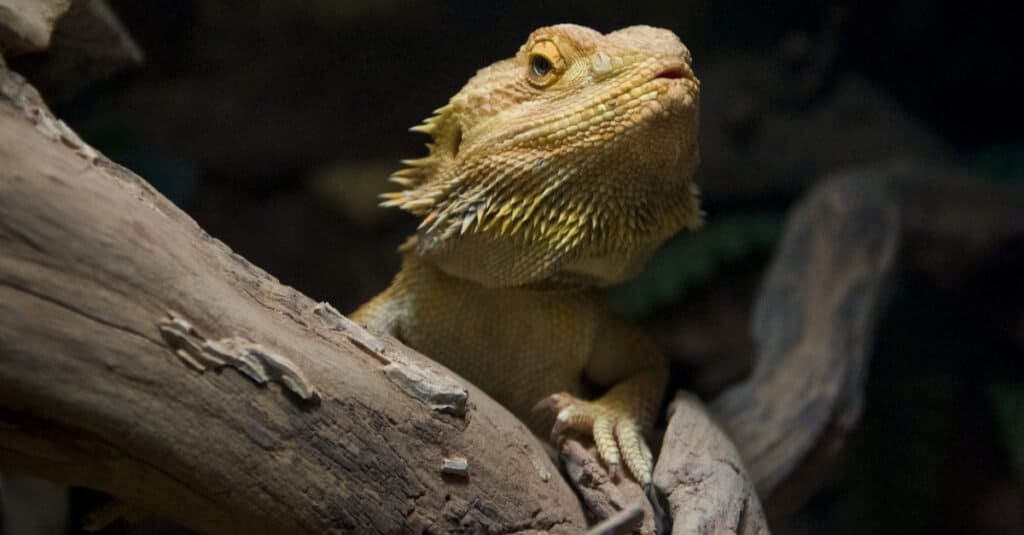Many animals must undergo a period of dormancy or significantly lessened activity to save energy during a particular time of the year (typically the cold, harsh winter months). Depending on the type of animal and where they live, how they prepare themselves for and experience this dormant period can vary.
You’ve likely at least heard of hibernation at some point and are vaguely familiar with how it works. However, brumation is less common in the animal kingdom and certainly not as well understood. What are the differences between brumation and hibernation? Do they have any similarities? What kinds of animals undergo each type of dormancy?
Let’s take a closer look at these life-saving processes below. We’ll touch on how they are similar, how they’re different, and why they’re so crucial for various species of animals to survive and thrive.
What is Hibernation?

Mammals like the black bear often hibernate during the winter.
©BGSmith/Shutterstock.com
Essentially, hibernation is a period of dormancy or significantly lessened biological activity. Certain animals (usually endothermic animals like mammals) occasionally undergo hibernation to save energy and survive. This usually occurs when their usual food sources are scarce, and weather conditions are especially unforgiving. Hibernation can last from a few weeks to several months, depending on how harsh conditions are for a particular animal.
In most cases, hibernation occurs during the coldest and most unforgiving time of the year–winter! However, it also has a less-common summertime equivalent known as aestivation. Some animals will aestivate during the warmer times of the year if, for example, their usual water or food sources dry up in the very hot, arid conditions where they live.
By purposely putting their bodies into a state where all they really need to do is sleep and breathe, endothermic animals like rodents, bears, and bats can significantly lower their body temperature and even their metabolic rate to conserve energy. What’s more, this state allows them to get through a period they might not be able to survive normally.
Many hibernating animals will eat large amounts of food just before hibernation to sustain themselves. This process is known as hyperphagia. It’s common for animals to lose anywhere from 15% to as much as 30% of their total body weight during hibernation. This means filling up beforehand is often essential for survival!
However, “hibernation” is a term we typically use to refer to endothermic, or warm-blooded, animals. Let’s talk about the equivalent, brumation, for our scaly, amphibious, and insect friends below!
What is Brumation?

Many lizards like the green anole brumate during the winter.
©Leena Robinson/Shutterstock.com
Brumation is best understood as the ectothermic animal’s equivalent of hibernation. Reptiles, amphibians, and even some insects undergo brumation, typically during the coldest time of the year. Most animals’ brumation periods are triggered by a drop in temperature and a decreased access to their usual food sources.
Ectothermic animals, often referred to as “cold-blooded,” must rely on their surroundings to generate body heat and keep their bodily processes like digestion and respiration functioning normally.
Endothermic, “warm-blooded” animals like mammals and birds produce their body heat as a sort of byproduct of their other internal processes. However, ectothermic animals like reptiles, fish, and amphibians have to be a bit more resourceful and creative. They may, for example, bask on a warm rock to raise their body temperature. Alternatively, they may dig a burrow in some cool, moist sand to cool off on a hot day.
This distinction also means the way “cold-blooded” animals undergo dormancy differs from how warm-blooded animals hibernate. Next, we’ll get into some of the specific differences between brumation and hibernation.
Brumation vs Hibernation: Key Differences

The way reptiles like
bearded dragons
undergo brumation is different from how mammals hibernate.
©Zhitkov Boris/Shutterstock.com
Now that we have a better understanding of what brumation vs hibernation is, let’s compare the two more closely. Both are life-saving periods of dormancy undergone by certain animals to survive tough external conditions. However, they differ in a few key ways.
- Most notably, brumation refers to dormancy undergone by ectothermic “cold-blooded” animals, while hibernation refers to dormancy undergone by endothermic “warm-blooded” animals. Basically, animals like reptiles and amphibians brumate, while mammals (and some birds) hibernate. The term “brumation” arose in the early 20th century so biologists could easily differentiate the two processes.
- Hibernation typically lasts longer than brumation. A bear’s hibernation period can last for many months. A lizard’s brumation period, on the other hand, might only last a month or two or be more sporadic.
- Brumating animals often periodically wake up from time to time to eat and drink small amounts of food and water, while hibernating animals usually stay dormant for the entire period. Additionally, brumating animals must wake up periodically to drink water occasionally to survive their dormant period, while hibernating animals can go much longer without drinking or eating.
- Brumating animals usually eat less food before their dormancy begins, while hibernating animals have to eat increased amounts of food to sustain themselves. This also means brumating animals usually lose less of their total body weight during their dormant period.
The photo featured at the top of this post is © Zhitkov Boris/Shutterstock.com
Thank you for reading! Have some feedback for us? Contact the AZ Animals editorial team.







